SODANKYLA, FINLAND — It’s a huge, low-grade deposit — but can it be a money-maker? That’s the question facing Scandinavian Minerals (sgl-t) as it works hard to develop its Kevitsa nickel-copper deposit here in northern Finland.
Kevitsa is situated on state forestry land just above the Arctic Circle, 35 km north of the town of Sodankyla and 142 km north-northeast of Rovaniemi, the capital of Finnish Lapland.
The geography around the deposit is characterized by a peneplain at 220 metres elevation, and is made up of marshland, lakes, spruce forest and artificially drained pine forests.
While there is 24-hour darkness in winter, the season is moderate relative to similar latitudes in Canada’s Far North. The average temperature during the year is -0.8 Celsius, and there is no permafrost.
Thanks to the Finns’ characteristic industriousness, the region’s infrastructure is excellent, and includes a 21-megawatt hydroelectric dam built by the Finnish power company Kemijoki on the Kitinen River, 6 km west of Kevitsa. The paved, north-south E75 highway passes 7 km west of the deposit, and the rest of the way is by a well-maintained gravel road.
The Geological Survey of Finland (the Geologian Tutkimuskeskuksen, or GTK) discovered and drilled the Kevitsa deposit in 1984, with significant mineralization found in 1987.
Between 1990 and 1994, GTK completed 578 diamond drill holes totalling 50,000 metres in and around the Kevitsa deposit. Of these, 282 holes totalling 32,000 metres were drilled into the 1-sq.-km heart of the deposit, on 50-metre spacings for the top 200 metres and 100-metre spacings below that.
The deepest hole drilled by GTK reached a 970-metre down-hole depth, and Scandinavian has already drilled one slightly exceeding 1 km in depth.
In 1994, GTK tallied a resource (not compliant with National Instrument 43-101) to a depth of 300 metres of 112 million tonnes grading 0.19% nickel, 0.25% copper, 0.24 gram platinum per tonne and 0.09 gram gold, using a cutoff grade of 0.1% nickel.
Depending on metal prices, the contained nickel is roughly half the value of the deposit, with the rest split between copper, cobalt and platinum. There is also a little byproduct palladium and gold.
In all, GTK spent around $6 million on the property, mainly on drilling.
As was the custom in those days, the national government then passed on the project to Finnish metals giant Outokumpu, which expanded the resource to 234 million tonnes at similar grades, using a 0.26% nickel cutoff.
However, at that time, Outokumpu needed quite a high grade of nickel concentrate for its smelter in western Finland, but couldn’t generate good enough nickel recovery from the Kevitsa ore.
Simultaneously, in a major corporate restructuring effort, Outokumpu was shedding its mining assets around the world and refocusing on the more-profitable, downstream end of its business — smelting, refining and metal processing.
So, after a couple of years, Outokumpu handed Kevitsa back to the Finnish government, which in turn surrendered it by letting the claims lapse around 1997.
Thus, amazingly, one the world’s largest undeveloped nickel sulphide deposits was free for staking when Scandinavian Minerals president and CEO Peter Walker came to the area in late 1999.
Company history
Walker had founded Scandinavian Minerals’ key subsidiary Scandinavian Gold Prospecting in 1996 and, based out of London, has been its managing director and a major shareholder ever since.
The rest of Scandinavian’s officers and directors are: chairman John Kearney; honorary chairman Bryan Benitz; chief financial officer Roderick Chisholm; and directors John Pedersen, D. Campbell Deacon, Erich Sager and Joerg Gruber. In Finland, Scandinavian recently hired veteran Finnish geologist Krister Soderholm, formerly chief inspector of mines for the Ministry of Trade and Industry, to serve as vice-president of operations.
“I’m a lapsed geologist,” laughs Walker. “I know just enough geology to be really dangerous, which is why I’ve left all the technical geological decisions to John (Pedersen), who’s spent his whole life working in Nordic countries and Greenland, and made discoveries including Nalunaq.”
Walker also notes that Benitz “did the first European financing for Aber Diamond at twenty-five cents, when everybody else in London laughed Gren Thomas out of the room. I bought Aber at twenty-five cents, and that’s how I made some of the money to start Scandinavian Gold.”
As a private company, Scandinavian acquired the Kevitsa property from the Finnish Ministry of Trade and Industry in January 2000. The nine claims that make up the main property are not subject to any royalties or buy-in commitments. These claims, which expire in November 2008, entitle Scandinavian to carry out exploration drilling and bulk sampling.
Soon after acquiring the property, Scandinavian bought GTK’s database at a modest price, and then hired consultants SRK to carry out a prefeasibility study.
Given what Walker describes as the “perceived metallurgical difficulties” of the Kevitsa ore, the proposed route that SRK chose was a large-scale, open-pit mine at 15 million tonnes per year, and the making of a bulk concentrate for feeding into the commercially unproven PLATSOL pressure-acid leach process being developed for PolyMet Mining’s (POM-T, PLM-X) NorthMet project in Minnesota.
The problem was that, to make it work, the proposed mine would have to operate at quite a large scale.
“At Kevitsa, SRK had identified a probable reserve of 120 million tonnes, but said we should run it at fifteen million tonnes per year, which would only give it an eight-year mine life. And you don’t invest around 500 million dollars for an eight-year mine life,” Walker says.
He notes that Scandinavian did generate some interest from major companies, but just as the prefeasibility study was completed, nickel prices sunk below US$2 per lb. and any interest from majors or possibility to finance went out the window.
“The prefeasibility study was actually a positive one, with some nice numbers in it, but we were not going anywhere, so we sat and did nothing for a couple of years, twiddling our thumbs and surviving,” Walker says.
Back in action
As metal markets started to revive a few years ago, Scandinavian attempted to get a public listing via a reverse takeover of Platinova, but then opted for a cleaner, more straightforward initial public offering in March 2004 under the name Scandinavian Gold.
This was changed to Scandinavian Minerals in early 2006 for obvious reasons. (And yes, Finland’s technically not part of Scandinavia, but the company’s sticking with its name since it at least gets investors thinking about the right part of the world, and the company is exploring for precious and base metals in Sweden and Norway, too.)
The company also renamed the deposit “Kevitsa” in September, replacing “Kevitsa.”
Scandinavian raised about $5 million with its IPO and immediately set to work on its long-held goal: to see if it could make a smelter-grade concentrate from the Kevitsa ore.
All this metallurgical work was carried out at the GTK’s top-notch mineral processing laboratory, which is located in central Finland, in the town of Outokumpu.
The most important idea GTK had was to use Dow’s product TETA (triethylenetetramine) to depress the pyrrhotite in the nickel concentrate, so that there would be dilution with the iron sulphide.
“That really gave us one of the most important parts of the metallurgical breakthrough in September 2005,” Walker says.
In March 2006, Scandinavian had independent, London-based consultants St. Barbara Consultancy Services and CSA Consultancy complete a National Instrument 43-101-compliant technical report on Kevitsa.
The consultants calculated that, using a 0.2% nickel cutoff grade, measured and indicated resources at Kevitsa total 141 million tonnes grading 0.3% nicke
l, 0.42% copper, 0.01% cobalt, 0.12 gram gold per tonne, 0.18 gram palladium and 0.28 gram platinum — or 422,000 contained tonnes of nickel and 591,000 contained tonnes of copper.
In the inferred category lie another 291 million tonnes at similar grades.
Dropping the nickel cutoff to 0.1% boosts the total measured, indicated and inferred resource to a whopping 831 million tonnes at slightly lower grades, down to a depth of 1 km.
St. Barbara upgraded this work to a positive prefeasibility study in July 2006, outlining reserve-quality mineralized material to a 400-metre depth of 66.8 million tonnes at 0.295% nickel, 0.427% copper, 0.014% cobalt, 0.141 gram gold, 0.196 gram palladium and 0.303 gram platinum, using a 0.18% nickel cutoff.
Last summer, Scandinavian carried out a 33-hole, 11,500-metre infill-drilling and bulk-sampling program that gave the company more material for metallurgical test work, and more geotechnical information.
This metallurgical work was started in the fall in GTK’s labs and should be completed in April, and will include a shift towards enhancing the recovery of precious metals. The company is also open to any help from pressure-acid leach technologies.
While there is plenty of disseminated nickel-copper mineralization drilled off at shallow depths at Kevitsa, Pedersen thinks there may be a massive sulphide feeder zone deeper down.
“This is educated speculation, and it’s something we’re going to be looking at going forward,” Pedersen says. “If we have massive sulphides here at depth, we think we can find a lot of it.”
In looking for these deeper sulphides, surface geophysics is ineffective because there is too much noise from the disseminated mineralization to see through, so the hunt for deeper massive sulphides will require deeper holes and down-hole geophysics.
While Scandinavian originally had 9 sq. km of claims, it was granted a further 23 sq. km to the east and south to make absolutely sure the company had rights over any possible extensions to any massive sulphides.
Community support
Surface rights aren’t a problem because almost all the land is owned by Metsahallitus (the Finnish Forest and Park Service) and the government is pro-mining.
About a hundred people live in the nearby town of Petkula, and Walker says that “like the government, the locals are very supportive and want to see a mine.”
The town of Sodankyla has also started a new mining school in anticipation of more international mining projects starting up in Finland’s north.
Walker adds that, “we have all the power and water we need, which is great, and there are no people around, just a couple of billion mosquitoes in the summer. The location is what we think takes Kevitsa from a good deposit to a great one, and we can open-pit mine it.”
Last summer, Scandinavian submitted an environmental impact assessment prepared by Rovaniemi-based SVT, and in December applied for a mining licence from the Ministry of Trade and Industry. The company hopes to have both its mining and environmental permits within about a year.
Next, Scandinavian will begin a full bankable feasibility in the spring. It should take a year to complete and cost around $3 million.
Planning is already under way to upgrade the 7-km gravel road that connects Kevitsa to the main highway to the west. This work must include the building of a new, 100-metre bridge across the Kitinen River, as heavy mining trucks can’t drive across the power dam.
The broad plan is for annual, open-pit mining of 4.5 million tonnes of ore containing 18 million lbs. nickel and 24 million lbs. copper, with separate concentrates being sold to smelters.
At a capital cost in the neighbourhood of US$110 million, ore would be mined for 15 years from 68 million tonnes of open-pittable material, down to a depth of 400 metres and at a strip ratio of 2.3.
There is about a 10-metre layer of oxidized bedrock that does not behave as well metallurgically as the sulphides, so this must be stripped off before mining of ore can begin.
Scandinavian is targeting production in 2009, though Walker cautions that “that’s a bit elastic, depending on when we start the road building.”
While currently there is only one small nickel mine operating in Finland (owned by Outokumpu), the country still has a variety of nickel and copper smelters and refineries that take in feed from around the world, largely from Australia, and could conceivably buy concentrate from Kevitsa.
Scandinavian could either truck its Kevitsa concentrate to Rovaniemi (where the rail head is) and then send it by rail it down to Harjavelta, or else continue on to the port at Kemi on the Gulf of Bothnia (which is kept open all year with icebreakers) and then ship it along the coast to Pori in southern Finland, finally trucking the material inland.
“Or, ore could also be shipped to all these Chinese smelters that keep asking for feed, or down to Rotterdam or the Hague. . . etc,” Walker adds.
At last count, Scandinavian had 17.7 million shares outstanding and they traded at $5.50 within a 52-week high-low range of $5.95-$2.55.
At the end of November, Scandinavian had $15.3 million in cash and no debt, after having raised gross proceeds of $18.2 million in the last couple of years.
Walker nicely sums up the situation: “Kevitsa’s one of the world’s largest undeveloped sulphide-nickel deposits, we have one hundred per cent of it, it’s in a great location, we can open-pit mine it, and we’re targeting late 2009 production.”

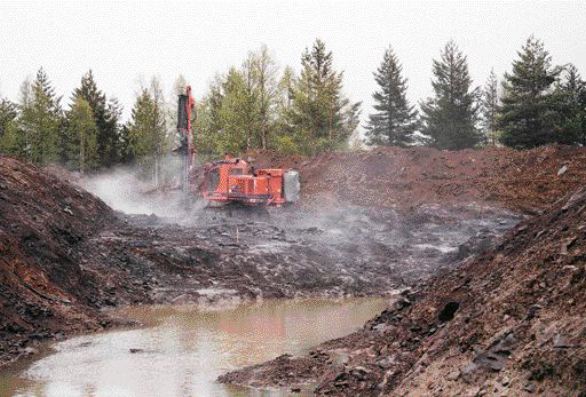
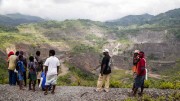
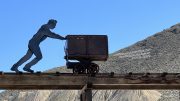
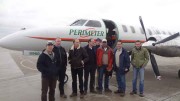
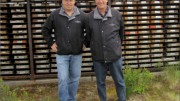
Be the first to comment on "Site visit: Sizing up Finland’s Kevitsa"